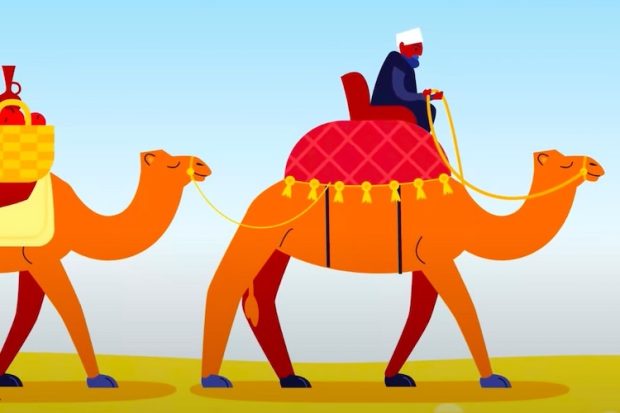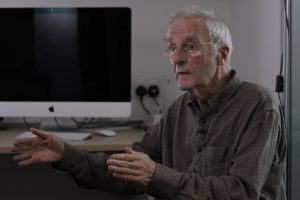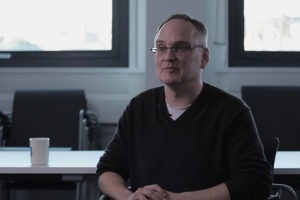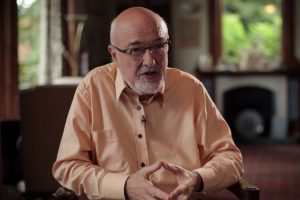Genes and the Environment
Geneticist Steve Jones on the nature-nurture controversy, genetics of obesity and how can you solve genetic pr...
Since at least the 17th century, when the great scientific societies like the Royal Society were founded, there has been a division in the world of knowledge between the sciences concerned with the natural world and those concerned with the cultural world, the things that humans make. That division is manifested in any university between the natural sciences departments and the humanities departments, where the social sciences have been somewhere in between. The Imperial College is an institution entirely devoted to the sciences and engineering, and we have another one around the corner, the Royal College of Art, which is completely unrelated to us. So, this split is completely radical.
But I think that’s wrong. I think that the world of culture and the world of nature should be studied by the same people and it should be studied scientifically. I believe that there should be a new science of culture and I want to outline what it would look like.
I’m an evolutionary biologist, and for that reason, it won’t surprise you when I say that I think that this new science of culture should be an evolutionary science. The reasons are really straightforward because culture shares something in common with organisms (which is what biology is concerned with) that they don’t share with other things in the world.
The first thing is that they are diverse. If you go out into a forest or into a coral reef, the thing that strikes you and the thing that biologists love, especially evolutionary biologists, the thing that motivates them is that immense diversity, that sense of variety within the unity of all the different varieties of fish or corals and seashells and so on and so forth. That is the thing that thrills us. We seek to explain that diversity. Of course, there’s one other kind of phenomenon or class of objects that is diverse: that is namely culture. You don’t have to look very far; you just have to look at the books behind me: all these are cultural objects. Every one of these books is the product of some person or several people, and collectively, I’ve got a few thousand books here, but this is only a tiny fraction of the number of books that have ever been written.
And there’s another thing which culture has in common with organismal diversity: it is purposeful; you can ask the question, ‘What is it for?’ You can’t ask the question, ‘What is the Moon or the stars for?’ The answer is they’re just there; they don’t do anything, they don’t have a purpose, they just exist. But that is not true for culture, and it is not true for organisms.
And then there’s the third thing that they have in common, namely that they are both the consequence of a descent with a modification process, to use Darwin’s term. When a species evolves, it never evolves out of nothing; it evolves from another species. When a child is born, it doesn’t appear de novo: it has parents, and it is that transmission of genomic information from one generation to the next, from one species to the next via DNA, an imperfect process that allows for mutation and recombination that gives us this variety.
The same is true for culture. When we make a cultural object, when I write a book or a scientific paper, when we design a jet engine when we make a film, we never start from scratch: you are always borrowing other people’s ideas and concepts (hopefully, not too closely but you do), and you take them, and you mix them up, and you produce something new. That, too, is a process of descent with modification, and that gives us all the diversity in the world. That is why I believe there should be a science of culture and that it should be an evolutionary science.
So, what is the essence of doing such a science? How do we go about doing it? The answer is very straightforward: we quantify. The thing that has changed that makes science possible today is that, for the first time in history, practically all of the cultural products of all of humanity are available to us. When I grew up, we only had access to a few songs, but now we have access to 30 million, and we can get all the books that have been published on our iPads.
Now that that’s true, we can no longer afford to study them as traditional humanities scholars have done, one at a time, reading them carefully, comparing this book with this book, that great painting with this great painting, and so on, constructing these restricted narratives based on the progress of one great work, one great artist to another.
What we now have to do (because we can) is to study it all, and the only way to study it all is to read it automatically because humans can’t do it. We have to get computers to do it, and that is what is happening. There are people now, including myself, who are working on methods to read art texts and music automatically. This is the world of machine learning. We have to reduce all that immense cultural diversity down to numbers. Once you reduce it to numbers, then you can begin to look for statistical patterns. If you do that, then you can begin to model it mathematically, and if you do that, then you’ve made science, and you have taken culture away from the humanities where they’ve had it for so long, and you’ve brought it into this new world of science.
Sometimes, I think that scientists armed with these new tools are going to overtake the humanities. But in my more charitable moments, I think that no, they’re going to be our new partners: they know the stuff, they understand what it means, but we have the machines, we have the numbers, we have the tools. And I think we are going to see together a flourishing of our understanding of human culture over the next few years.

So the essence of the problem is that we need to learn how to read all these cultural artefacts automatically. The only way to do that is computationally, and there are various ways of doing it. One way is to teach computers how to recognize particular objects: you train them. This is machine learning, the sort of technology that is being used in facial recognition and in self-driving cars. But I’m not interested in getting a car to drive by itself; what I want is to make a computer recognize a tulip. The reason I want to recognize a tulip is because I happen to be very interested in Iznik tiles: these are tiles made by Ottoman artists in the 15th and 16th centuries. They’re very beautiful; they’re covered with tulips, carnations, saz leaves, and many other wonderful motifs, some of which they got from China and some of which they got from Iran. There are thousands of them. If you go to Istanbul, the mosques are just covered with these things. Scholars have studied them, to be sure, but everyone has studied a fraction of them. What I want to do is I want to read them all, take photographs of them all, put them into a computer and get that computer to recognize and tell me what’s on those things. If I can do so, it can count them all. And we’re doing that.
But of course, that’s just one project about the tiles, the evolution of ornament, but you can do it to anything. I have a database of some 200,000 Dutch paintings, which is essentially the history of Dutch painting. I’ve got their data and their pictures, and now I know how to recognize what’s on those pictures so I can tell the story of the evolution of landscapes (or tulips again because it just so happens that the Dutch love tulips too). Those are the kinds of techniques which you can now do, which, as it were, amplified the ability of mere humans to absorb all this immense diversity of stuff that we’ve made and that fills our world.

Geneticist Steve Jones on the nature-nurture controversy, genetics of obesity and how can you solve genetic pr...

Psychologist Daniel Mullensiefen on research in musical abilities and the question of nature and nurture

Neuropsychologist Chris Frith on mirror neurons, perception of biological motion, and mentalizing